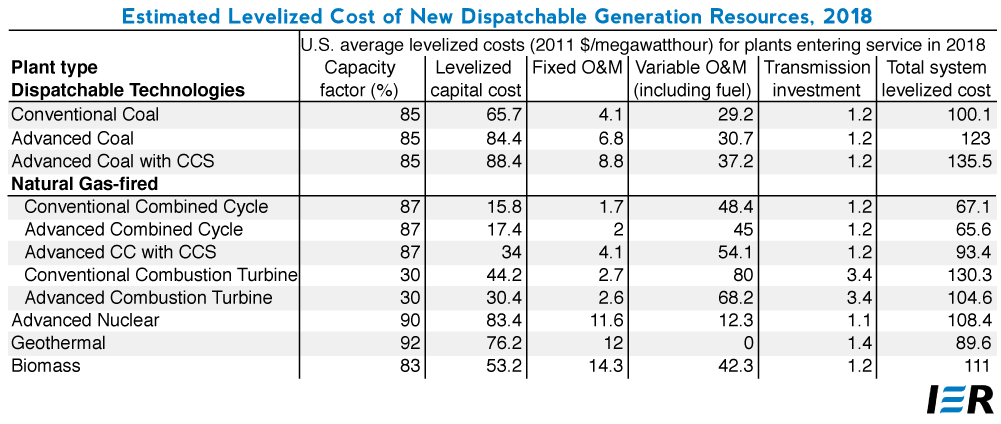Ahight, finally able to respond....
No, Z wasn't implying anything about switching from traditional power sources to renewables. Z copied and pasted that chart to show the economic viability (on average in the US) of installing new power generating capacity for various energy sources. That's how LCOE is used and why it's calculated, to compare overall costs of installing new capacity. I don't see where Z stated anything in the post that you replied to with "Actually, that is wrong". You've created an argument that didn't exist.
I work for an IPP developer. It's not a completely different animal, our major customers . partners are investor owned utilities. Our sales and dev teams pitch projects to them every day as utilities decide between building or buying additional capacity. We have a VERY good understanding of how utilities plan additional capacity and conduct load forecasting, it’s the very basis of our business model.
What? Why? Power plants have nothing to do with utilities? Utilities don’t sign PPA’s with IPP’s? Rhetorical questions, obviously they do. Ever since the deregulation of the energy markets utilities have increasingly sold off their generating assets or purchased (and re-purchased) through the wholesale market.
IPP’s, or NGU’s as you call them, product 50% of the electricity consumed in the US, and one of their most used metrics is LCOE. Obviously other considerations exist with building or buying additional capacity, including, as you mentioned, generation mix, LACE estimates, RPS fulfillment, regional constraints, etc. You won't build a wind farm in Eastern Kentucky, just like you won't choose to set up a coal plant in the Central Valley of CA. But what Z posted, to which you said “Actually that is not true” is the average LCOE figures for the US, which vary in each and every situation.
The energy market does not stop at the old vertically integrated utility model of building power plants and selling directly to consumers. It’s moving farther away from that every year.
No, it’s not 100% true that a utility installs or buys back-up generation to support wind. PG&E’s Bigalow Canyon wind farm was not built with back-up generation because the wind farm serves as a large scale variable energy generator that is used in combination with existing dispatchable sources. The Xcel Nobles Wind Farm was not built with additional back-up generation as the energy generated from the farm is used to satisfy MN’s RPS. The back-up generation is already in place with traditional sources. The implementation of renewables is to satisfy increased demands and/or renewable portfolio standards.
I can EASILY explain why it’s not true, you’re just not listening. As I’ve said on numerous occasions, the LCOE calculation is a measure of installing incremental capacity to an existing resource mix in which grid demands require additional supply.
You build a 200 MW wind farm, like Xcel did in MN, at $1.50 / W that generates electricity at 5c per kWh. Nice metrics, right? And you don’t have to install a Watt of back up generation, because it’s already in place with the existing grid servicing the greater Minneapolis area. This supplements energy previously generated and consumed from the dispatchable power generators in the grid so that when the wind doesn’t blow, the existing generators will fulfill the demand. Our grids are designed to accommodate constant fluctuations of supply and demand. It’s no different when energy created by wind farms is introduced.
But we both know that utilities just don’t go out and build a 100MW plant to satisfy a 100MW shortfall in supply. More often than not, they’ll bridge that gap with positions in the wholesale energy market, perhaps supplemented by building their own generating assets.
Wha??? That’s just absurd. So PSE&G isn’t building
Sewarn 7 to supply additional capacity to their NJ grids? Duke Energy isn’t constructing a
750 MW gas plant in SC to add additional capacity? Dominion isn’t building a 1,400 MW gas plant in VA to supply additional generating capacity and “
serve growing customer demand”?? LG&E and KU aren’t building the
new gas plant at the Cane Run property?
And then you say that utilities are mandated to buy their power…..but dismiss the importance of LCOE?
I have no interest in getting anywhere near the CCN process. Are we going to start comparing the banality of our occupations by describing administrative processes that add to soft costs? Let’s discuss the HR training that you we to complete in our respective companies, yeah?



